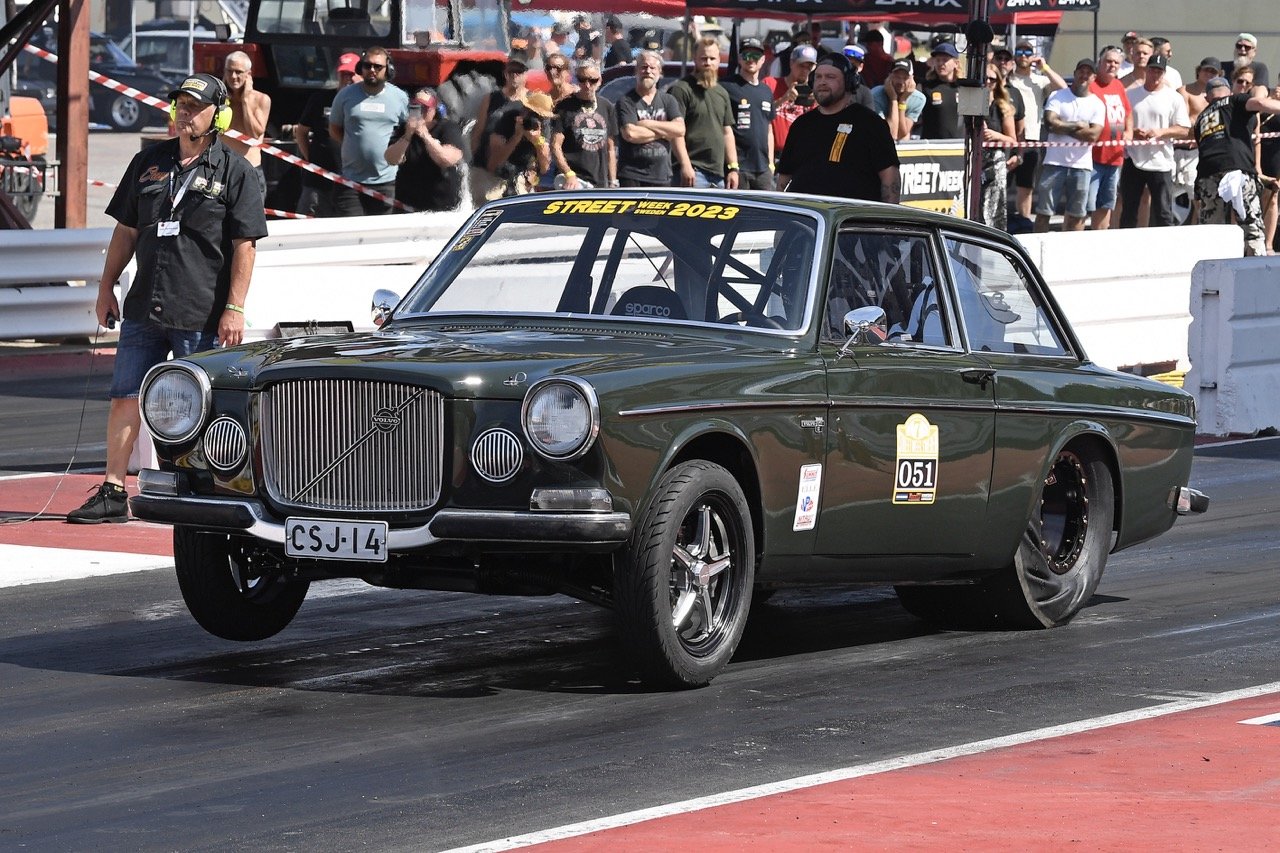The Weekly Reekie Guide to Street Week Sweden
Next week is Street Week, Sweden’s annual seven-day drag-and-drive. It’s just like a regular drag-and-drive — only Swedish!
Starting out on Sunday at the Mantorp Park Motorbana, the tour will make stops at Dala Järna Airfield on Monday, Sundsvall Raceway on Tuesday and Söderhamn Airport on Wednesday. Thursday is scheduled as a drive-only day, then it’s on to Laxå Motorstadion on Friday and back to Mantorp Park on Saturday.
Street Week Sweden started in 2017 and, like all of ’em, it takes its inspiration from Hot Rod Drag Week. But what makes it different are the same things that make Sweden different – there are differences in the society and culture, in the cars and racetracks, and even in the roadkill.
So grab your passport and your moose repellent, here’s your handy Weekly Reekie guide to taking on a Swedish drag-and-drive…
There’s More Volvos
Surprise, surprise! You’re gonna see a lot more Volvos racing at Street Week than you would at the average American drag-and-drive. And there’s bound to be a few GM-based Opels too – models like the Kadett, the Ascona and the KAD family (Kapitän, Admiral and Diplomat) – which can differ wildly from their US relatives. Otherwise, expect the majority of the 200-car field to be made up of Chevys, Ford and Mopars, because Swedes love American muscle. Although the laws surrounding modified vehicles are stricter than in the States, their drag-and-drive cars are still ridiculously quick. Former Sick Week winner Michael Westberg currently holds the Street Week record for quickest ET with a 4.09/175mph, set last year in his Camaro Pro Mod.
Tracks Are Scarce
Sweden has far fewer dragstrips than America does, so Street Week switches from the dragstip to the airstrip on some of the days. Racers must be flexible with their set-ups in order to contend with the various track conditions, which can range from prepped 1/8th-mile strips to airport runways that have never seen a racing slick before. This year the tour will hit the Dala Järna Airfield and the Söderhamn Airport, as well as the unprepped Laxå Motorstadion. The mix of surfaces really adds some extra spice to the challenge.
It’s A Classless Society
Street Week Sweden maxes out at 200 cars and there are 11 racing classes, led by the big-power, big-tire Max Outlaw class. One major difference in the way they race is that the classes don’t necessarily run together in the same session. Instead, the staging lanes are totally democratic, run on a first come, first served basis. This lack of hierarchy is a source of pride for Street Week organizer Mats Appelgren, who said: “It’s first in line, first served. No extra prep for anyone, and no-one to go before in line, whatever your name is.”
They Speak Swedish
There’s over 10 million inhabitants of Sweden, and, while almost all of them speak Swedish as their first language, most can speak English as well. Which means that they can probably understand you, but you probably can’t understand them. To help out any of you non-Swedish speakers, here’s a few translations that may come in handy during a drag-and-drive: “Flat tire” = “Punktering!” “Oil leak” = “Oljeläcka!” “It’s all totally legal, officer, I swear!” = “Det är helt lagligt, konstapeln, jag svär!”
A Scandinavian Mile Is Very Long
The Street Week route map will list the distances in kilometers not miles because Sweden uses the metric system and has done since the 1800s. There’s a chance you may hear mention of a “Scandinavian mile”, or simply “mil”, which is a unit of length common in Sweden and neighboring Norway. The traditions of it go way back, but basically one “mil” is equal to 10 kilometers, which is equal to 6.2 actual miles. While the "mil” is not used on Swedish road signs, it’s common in colloquial speech, including the “halvmil” (half a mile), which is five kilometers, or 3.1 actual miles. In an attempt to avoid confusion, when Swedes talk about an actual mile they refer to it as an “Engelsk mil” (English mile). At Street Week the racing is all done over the 1/8th-mile, because even after all these centuries they still measure the distance of racetracks in Imperial.
Moose Kill
Sweden ranks very highly for traffic safety, so you have far less chance of being involved in a motor vehicle accident there than in America. Still, just be mindful that you don’t hit a moose and die! Did you know that there are more moose in Sweden per square mile than any other country in the world? And apparently moose vehicle collisions along Swedish highways are a serious problem. Such a problem that these incidents have their own abbreviation: MVC, Moose-Vehicle Collision. Around 10-15 people are killed and 500 are hurt in MVC in Sweden each year.
Many thanks to Magnus Frost for his insights and translations.
Street Week Sweden 2024 will be broadcast live during the competition week via http://www.nitrozplay.se/















